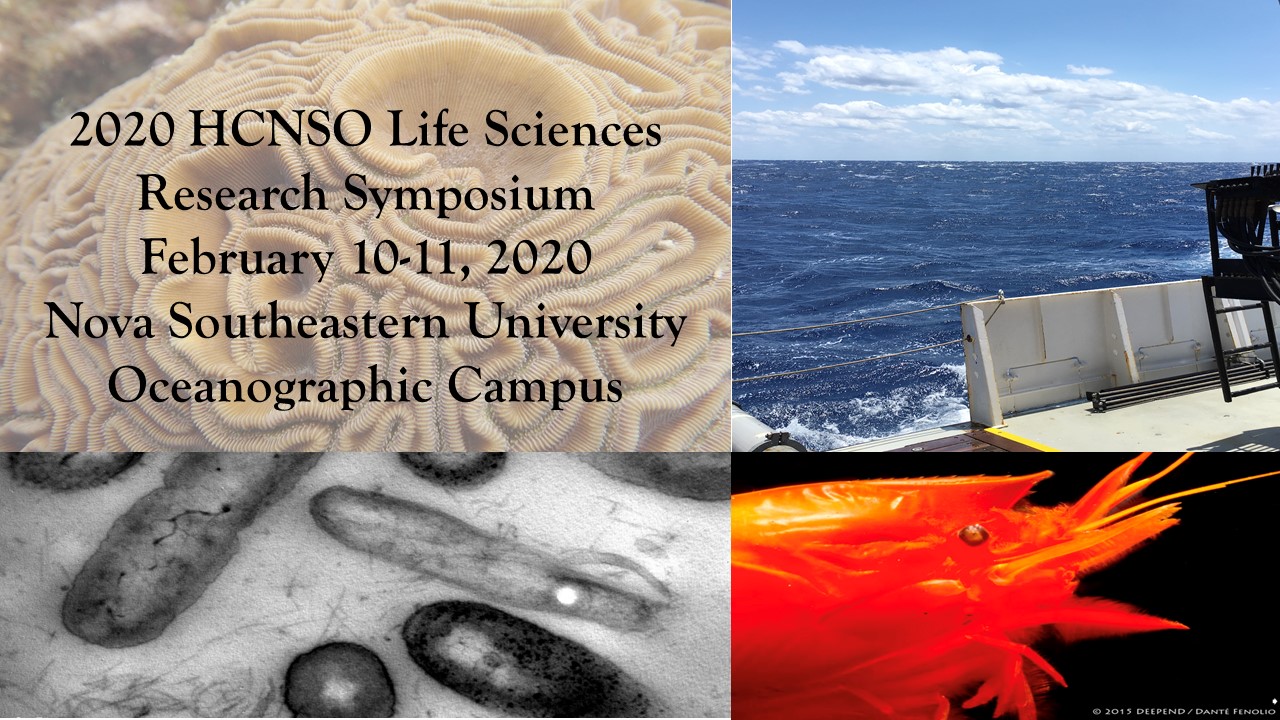Using Otolith Morphometrics to Estimate the Ages of Commercially-Valuable Sciaenid Fishes
Location
HCNSO Guy Harvey Oceanographic Center Nova Southeastern University
Start
2-10-2020 3:00 PM
End
2-10-2020 3:30 PM
Type of Presentation
Poster Presentation
Abstract
Sciaenids are a diverse family of coastal fishes and their fisheries are an important industry in the United States. However, our limited knowledge of age structure for some species inhibits the sustainable utilization of these socioeconomically important fish stocks. Fishery managers use a stocks age structure to develop appropriate management plans that maximize yearly harvests while keeping the fishery sustainable. Teleost fish can be aged by counting annuli in scales, vertebrae, and otoliths, or, potentially, otolith morphology. This study aims to develop and test morphometric age models on six species of commercially valuable sciaenids. Specifically, red drum (Sciaenops ocellatus), black drum (Pogonias cromis), spotted seatrout (Cynoscion nebulosus), sand seatrout (Cynoscion arenarius), Atlantic croaker (Micropogonias undulatus), and spot (Leiostomus xathurus). Digital measurements of photographed sagittal otoliths will be used to determine otolith morphology. Subsequently, left otoliths will be sectioned to reveal concentric growth rings (annuli) that will be counted to age individuals. These two approaches will be compared using computer software to develop models to estimate age by analyzing external otolith morphology. This technique may provide a valuable alternative to traditional time-consuming aging methods.
Using Otolith Morphometrics to Estimate the Ages of Commercially-Valuable Sciaenid Fishes
HCNSO Guy Harvey Oceanographic Center Nova Southeastern University
Sciaenids are a diverse family of coastal fishes and their fisheries are an important industry in the United States. However, our limited knowledge of age structure for some species inhibits the sustainable utilization of these socioeconomically important fish stocks. Fishery managers use a stocks age structure to develop appropriate management plans that maximize yearly harvests while keeping the fishery sustainable. Teleost fish can be aged by counting annuli in scales, vertebrae, and otoliths, or, potentially, otolith morphology. This study aims to develop and test morphometric age models on six species of commercially valuable sciaenids. Specifically, red drum (Sciaenops ocellatus), black drum (Pogonias cromis), spotted seatrout (Cynoscion nebulosus), sand seatrout (Cynoscion arenarius), Atlantic croaker (Micropogonias undulatus), and spot (Leiostomus xathurus). Digital measurements of photographed sagittal otoliths will be used to determine otolith morphology. Subsequently, left otoliths will be sectioned to reveal concentric growth rings (annuli) that will be counted to age individuals. These two approaches will be compared using computer software to develop models to estimate age by analyzing external otolith morphology. This technique may provide a valuable alternative to traditional time-consuming aging methods.


